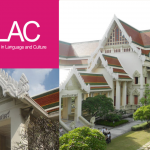Decoding the Gods: The Mythological Significance of Eye of Horus
The Eye of Horus is one of the most enduring and enigmatic symbols in ancient Egyptian mythology, with a rich history spanning over 5,000 years. This iconic image has been associated with protection, royalty, and divine power, captivating the imagination of art historians, archaeologists, and spiritual seekers alike. In this article, we will delve into the mythological significance of the Eye of Horus, exploring its origins, symbolism, and continued relevance in modern times.
The Story of Horus site and Seth
To understand the significance of the Eye of Horus, it is essential to grasp the underlying mythology that gave rise to this symbol. According to Egyptian legend, Horus was the son of Osiris and Isis, two of the most important deities in ancient Egypt’s pantheon. His father, Osiris, was a king who ruled over Egypt with wisdom and justice, earning the love and respect of his people. However, his brother Seth, driven by jealousy and a desire for power, murdered Osiris and divided his body into 14 pieces.
Isis, determined to restore her husband’s life, gathered up the pieces and brought him back to life long enough to conceive Horus. After being born, Horus grew up to be a powerful warrior who sought revenge against his uncle Seth for killing his father. In a series of epic battles, Horus defeated Seth, restoring balance and order to Egypt.
The Wounded Eye
During the final battle between Horus and Seth, one of Horus’s eyes was severely injured when Seth gouged it out with his sharp claws. The eye was said to be so damaged that it had to be restored through a magical ritual performed by Thoth, the god of wisdom and magic. This mythological event gave rise to the Eye of Horus, which is often depicted as a symbol of protection and healing.
Symbolism of the Eye
The Eye of Horus is often associated with various aspects of ancient Egyptian mythology:
- Protection : The eye was seen as a powerful protective symbol, warding off evil spirits and negative energies. In many temples and tombs, images of the Eye of Horus were painted or carved to safeguard against malevolent forces.
- Royalty : As the son of Osiris, Horus was considered a divine king, and his eye became a symbol of royal authority and power. The pharaohs of Egypt often wore the Eye of Horus as an amulet to connect with their divine heritage.
- Healing : The mythological restoration of Horus’s eye by Thoth is said to have imbued it with magical healing properties, making it a potent symbol for curing illnesses and injuries.
Anatomical Significance
The Eye of Horus has been interpreted in various ways due to its unique anatomical composition. It consists of six distinct parts:
- Cornea : The outermost layer, representing the physical realm.
- Iris : The middle layer, signifying intuition and perception.
- Pupil : The center of the eye, associated with divine insight and wisdom.
- Lid : The protective covering that shields the eye from harm.
Mathematical Significance
The Eye of Horus has also been linked to mathematical concepts, further reinforcing its symbolic importance:
- Geometry : The proportions of the Eye are said to reflect the golden ratio (phi), a fundamental principle in mathematics and art.
- Numerology : Each part of the eye corresponds to a specific number: 1-6. In ancient Egyptian numerology, these numbers hold significant spiritual significance.
Modern Relevance
The Eye of Horus has transcended its mythological origins to become a universal symbol, resonating with people from diverse cultural backgrounds:
- Spirituality : The Eye is often used in meditation and energy healing practices, representing the connection between the physical and spiritual realms.
- Art and Design : This iconic image continues to inspire artists, designers, and architects worldwide, influencing various forms of creative expression.
Conclusion
The Eye of Horus remains an enigmatic yet captivating symbol that embodies the essence of ancient Egyptian mythology. Through its rich history, symbolism, and continued relevance in modern times, this icon has become a powerful representation of protection, royalty, healing, and divine power. As we continue to explore the depths of human culture and spirituality, the Eye of Horus remains an intriguing reminder of our shared heritage and connection to the ancient wisdom that shaped our world.
The Legacy of the Eye
As we close this exploration into the mythological significance of the Eye of Horus, it is essential to acknowledge its profound impact on modern art, architecture, and spirituality. The influence of this iconic symbol can be seen in various forms of creative expression:
- Architecture : Buildings and monuments around the world feature the Eye of Horus as a decorative motif or central theme.
- Art : Painters, sculptors, and graphic artists continue to draw inspiration from this timeless image.
- Spirituality : The Eye remains an integral part of many spiritual practices, serving as a symbol of connection between the physical and spiritual realms.
In conclusion, the Eye of Horus is more than just a mythological relic; it represents a profound understanding of human nature, our connection to the divine, and the enduring power of symbolism in shaping our culture.




About the author